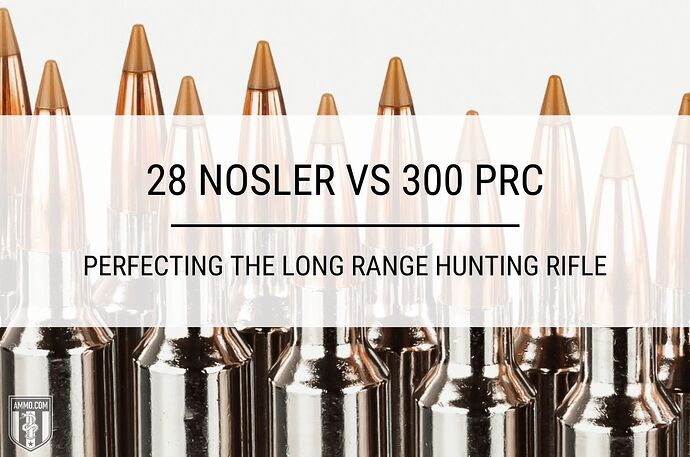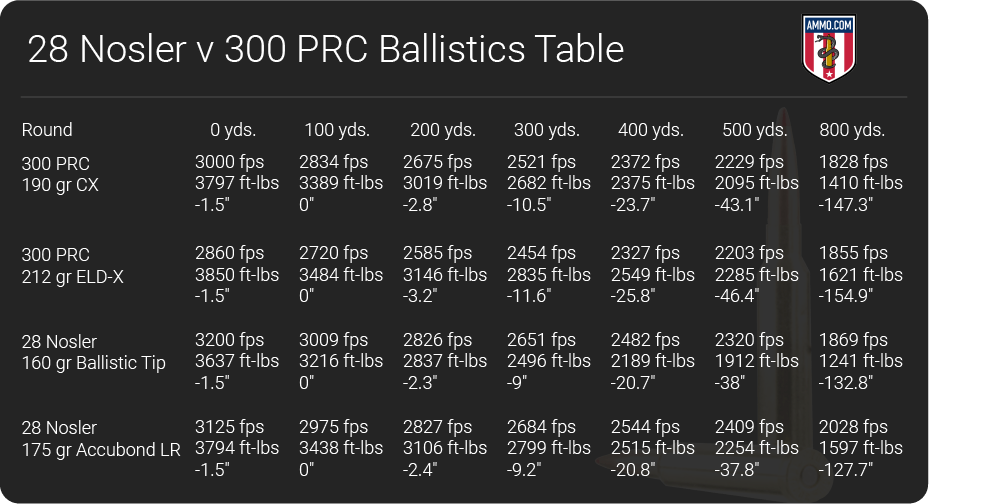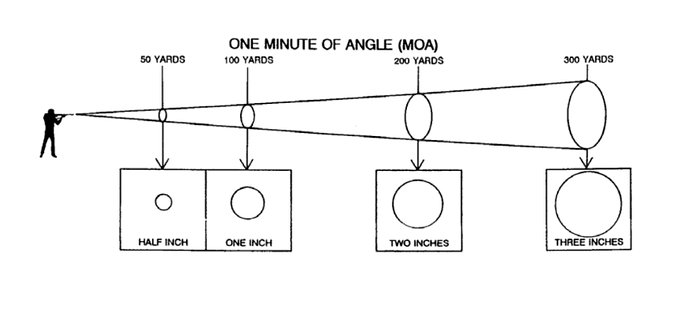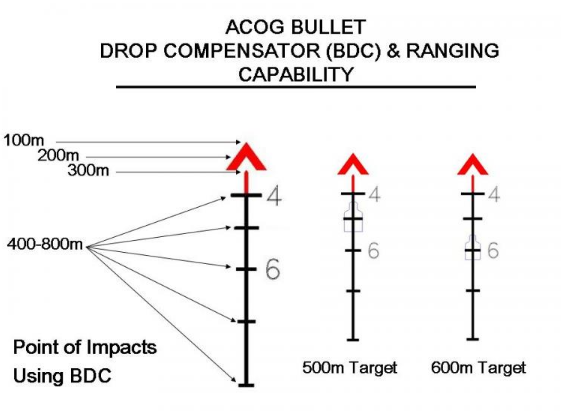The 28 Nosler and Hornady 300 PRC are two centerfire rifle cartridges that were developed for long range shooting and hunting. They represent the pinnacle of 21st Century ballistic technology and development that were designed to hit targets at ranges of over 1,000 yards while maintaining sub-MOA accuracy.
Long range hunting is not a new concept, for decades hunters have been relying on cartridges like the 300 Winchester Magnum, 7mm Rem Mag, and 300 Weatherby Magnum to reach out past 500 yards. Although these rifle cartridges are effective at taking big game, their chamber designs limited the types of bullets that could be used.
Hunters wanted access to longer, more aerodynamic bullets to maximize downrange performance, and the 300 PRC and 28 Nosler were designed from the ground up with these bullets in mind.
How then are you to decide which cartridge is best for your style of shooting or unique hunting needs?
In this article, we will evaluate the 28 Nosler vs 300 PRC to help you understand the differences between the two and give you a clearer idea of which cartridge is best for your next hunting rifle.
What is the difference between 28 Nosler and 300 PRC?
The primary difference between the 28 Nosler and the 300 PRC is that the 28 Nosler fires 0.284” diameter bullets compared to 0.308” for the 300 PRC. Also, the 28 Nosler has higher case capacity and will generally have higher muzzle velocity than the 300 PRC.
Cartridge Specs
When evaluating centerfire rifle cartridges, it’s a good idea to analyze the cartridge specs to gain more knowledge of each.
Both cartridges draw their heritage from rounds designed to hunt large or dangerous game. Hornady developed the 300 PRC from the lesser known 375 Ruger cartridge while the 28 Nosler comes from the 404 Jeffery. The 404 Jeffery sired the majority of Nosler’s cartridge line, namely the 30 Nosler, 26 Nosler, and 33 Nosler as well as other cartridges like the 7mm Remington Short Action Ultra Magnum (SAUM).
One of the most prominent differences between the two is that the 28 Nosler fires a bullet diameter of 7mm or 0.284” while the 300 PRC fires the more common 30-caliber or 0.308” diameter bullets. The 300 PRC fires heavier bullets between 190 and 225 gr while the 28 Nosler fires lighter bullets typically between 160 and 185 grains.
Another striking difference between the two cartridges is their overall length. The 3.7” long 300 PRC towers over the shorter 28 Nosler at 3.34” despite both having nearly identical cartridge case lengths at 2.58” and 2.59”, respectively.
This difference in overall length demonstrates a major difference in design concept between the two rounds. The 28 Nosler was designed to fit into a standard long action like the 30-06 Springfield, while the 300 PRC fits into a magnum action like the 338 Lapua Mag.
When Hornady set out to build the 300 PRC, they developed what they considered the ideal 30-caliber round and then built the rifle action around it. In contrast, Nosler developed the 28 to fit into a long action as it is lighter and has a shorter bolt throw. This will mean that follow up shots will typically be faster with a 28 Nosler and rifles for the cartridge will be lighter than those for 300 PRC.
Both cartridges require the use of a magnum bolt face thanks to their base diameter of 0.532” for the 300 and 0.534” for the 28.
Although the maximum chamber pressure for both cartridges is 65,000 psi per SAAMI specs, the 28 Nosler has considerably more case capacity at 93 gr compared to 77 gr for the 300 PRC.
Recoil
Recoil is an important consideration when purchasing a new rifle as a round with heavy recoil will be more difficult to control and will slow your rate of follow up shots.
Recoil is affected primarily by muzzle velocity (FPS), powder charge, bullet weight, and rifle weight.
For this recoil comparison, it is impossible to achieve a pure “apples to apples” comparison as the 300 PRC fires heavier bullets than the 28 Nosler. The lightest factory load available for the 300 is the Hornady Outfitter firing a CX polymer tip 190 grain bullet traveling at 3,000 fps. The 175 gr AccuBond Long Range traveling at 3,125 fps will be selected for 28 Nosler.
The Savage 110 will be the test firearm as it has configurations for both calibers and weighs around 8.7-pounds.
Given these parameters, the 300 PRC will have 32.9 ft-lbs of free recoil while the 28 Nosler will have 32.3 ft-lbs of free recoil. In this case, both rounds have almost the same free recoil energy.
However, the 300 PRC was designed to fire 200+ grain bullets, and the 212 gr ELD-X is their recommendation for big game hunting. Traveling at 2,860 fps, the 212 gr load will have a free recoil of 36 ft-lbs.
Anything over the 20 ft-lbs threshold is generally considered heavy recoil, which is why many rifles for both cartridges will come with a muzzle brake installed from the factory. A muzzle brake works by redirecting gasses from the burned gunpowder to help reduce felt recoil.
However, the 28 Nosler will generally have less recoil than the 300 PRC as the 28 is firing lighter bullets.
Continue reading 28 Nosler vs. 300 PRC: Perfecting the Long Range Hunting Rifle on Ammo.com




